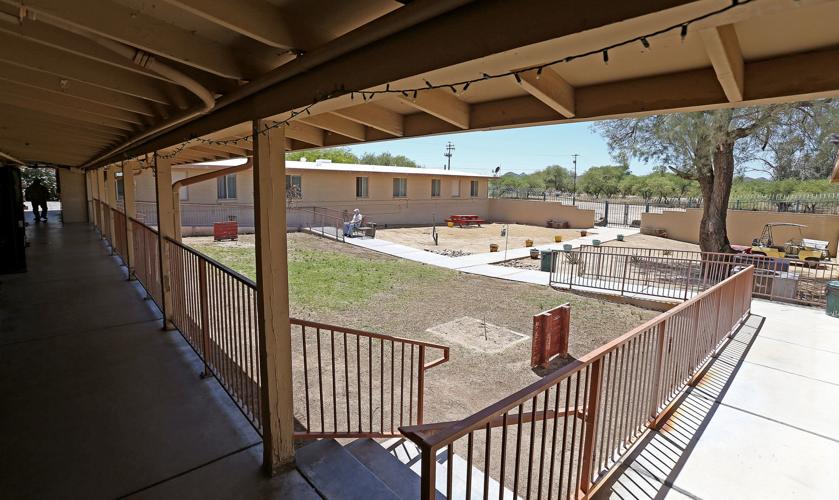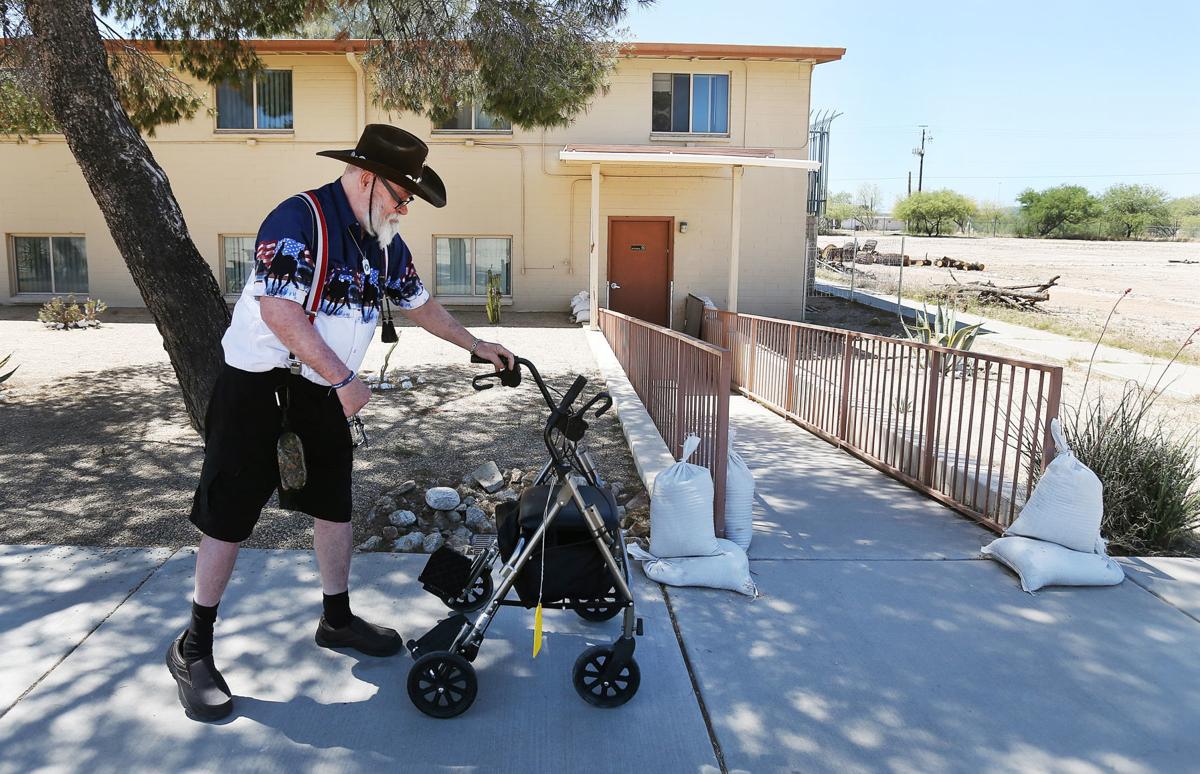The residents of the Marshall Home for Men probably know little about the efforts of Joe Cimino to keep the place open.
While the mostly decorated Korean and Vietnam war veterans make their way to the dining room for lunch at the assisted-living residence, Cimino, executive director of the home, is working on bids in his office to upgrade the sprinkler and fire-alarm systems.
The majority of the 52 men have medical conditions associated with their military service and aging. They may be referred to the residence by a family member, a hospital or nursing home social-services worker or a community-outreach coordinator.
If the facility ever closed, potentially half the men living there now would face homelessness, said Cimino, who turns people away several times a month because the facility is at capacity.
Requirements for prospective residents include being free of alcohol or drug use for at least six months, being ambulatory with canes or walkers, and not needing to use supplemental oxygen.
The monthly rent is $1,500, and half of the men have little financial means, using Social Security or disability income to make rent.

JoAnn Brigham, center, who works in the kitchen and cleans the dormitories, laughs with residents Charlie Davis, left, a Navy veteran, and Air Force veteran David Verdusco.
Cimino, who served during the Vietnam War and is an experienced nursing home administrator, was asked by the home’s board of directors to take over the facility 13 years ago. He originally planned to stay one year and fix the operation, which sits on six acres.
Then, he met three military veterans who made an impact on him.
One saw battle in Vietnam, and another served on a ship during the bombing at Pearl Harbor. The third served under Gen. George Patton during World War II.
“They were war heroes in their day who were now forgotten by society,” recalled Cimino. “So I stayed and made changes and cleaned up the place,” he said of the property that was once part of a 180-acre ranch. The home’s annual budget is $644,000, and the facility employs five full-time and 12 part-time employees.
In 1931, Rancher John Ryland welcomed men who were struggling to find work during the Great Depression. Ryland, who died in 1937, provided food and shelter to the men, and in 1958 the property was renamed the Marshall Home for Men in honor of the foundation that helped with financial support. One residential wing was built that year, and in the early 1970s a second wing was built.
Keeping the facility open and running properly takes up much of Cimino’s time — he’s now dealing with flooding issues, proper fire department permits and what to do next year, when a $1-per-year lease the facility has with the city of Tucson expires.
During a recent visit from a Tucson Fire Department inspector, Cimino said he was notified that under new regulations he needs to obtain a permit from the fire department to continue operating.
The costs for the permit, sprinklers and fire-alarm upgrades could run about $12,000. On top of that, Cimino is faced with possibly having to build a $46,000 wall to divert rainfall from flooding portions of the property. The monsoon season is around the corner.
He worries, because he’s not sure the wall will keep water off the property.
Since 2005, when Cimino took over at the home, he said the property has flooded four times, causing $25,000 in damage to the basement, which serves as a recreation room. Donations have paid for cleanup and new furnishings.

The Marshall Home for Men, 3314 S. 16th Ave., has been housing and helping elderly men since 1958.
Four years ago, workers began using sandbags and devised a metal plate to reinforce the basement door to prevent flooding. Up to 5 feet of runoff has entered the basement, Cimino said.
City Councilwoman Regina Romero represents the area where the home is located, 3314 S. 16th Ave. The home is just east of Interstate 19 and south of the I-19 and I-10 junction.
Romero said she is working on gathering city, Pima County Regional Flood Control District and Arizona Department of Transportation officials to meet and revisit the flooding issues.
“I want to focus on how we can all work together to figure out a solution,” said Romero.
“The Marshall Home for Men does very important work, and we do want to help,” she said.
Steve Arnquist, chief of staff for Romero, said he is waiting for updated figures on the property’s appraisal from the city’s real estate division.
The $1-a-year lease agreement between the Marshall Home and the city is up May 2019. After that, the home would lease the property from the city for $1,536 a year. Cimino said the nonprofit may look into buying the property and rebuilding the facility to hold 100 residents. But he said he doesn’t think the property is worth $103,000 because of the flooding problem.

Don Kershner, a Navy veteran who served in World War II, eats lunch at the Marshall Home for Men, which is at capacity with 52 residents.
After the state built a 25-foot high wall running west of the Marshall property as part of the reconfigured I-10 and I-19 junction, the flooding on the Marshall property began, Cimino said.
A wash runs along the west boundary of the property, and a second wash runs along the south boundary. Thick grasses, a mesquite bosque and wildcat dumping on the west side of the property are also adding to the flooding, said Cimino. He said those city and state lands need to be cleaned and maintained.
Cimino also questions if the culvert under I-19 is wide and deep enough to carry runoff to the Santa Cruz River.
Meanwhile, 73-year-old resident Thomas Coleman, a Vietnam War veteran, has lived at the home since 2001.
The retired Air Force aircraft mechanic served at the Pleiku and Phan Rang air bases during two tours in the 1960s. He retired as a master sergeant in 1986 after serving for 24 years.

Roger Sanderson shows his meticulous Bible-study notes. Floodwaters sometimes enter the basement where his study group meets.
Coleman said he is divorced and has two sons who live in California who he keeps in touch with. He said he moved to Tucson in 1991 because he liked the city and was familiar with Davis-Monthan Air Force Base, working there as a civilian supervisor in the aircraft “boneyard.”
While at D-M, he became sick and had thyroid surgery at the VA hospital. He then moved into the Marshall Home.
“I like everything about this place,” said Coleman. “It is the comfort of home. The residents here are my family. I don’t plan on leaving.”









